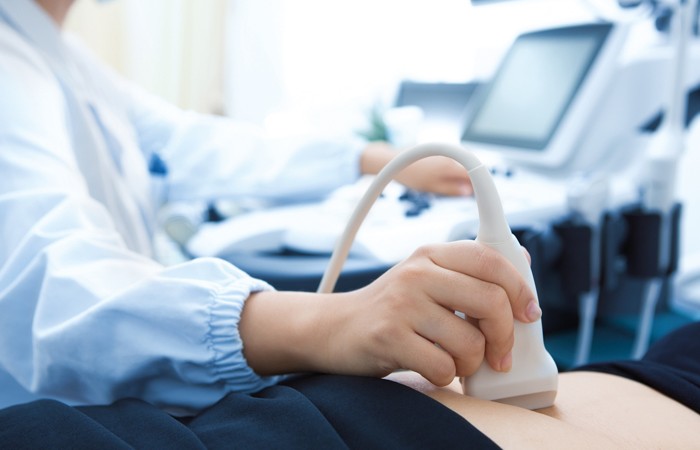In OTC Category Reviews
Follow month by month updates on topics including asthma, mental health and skin conditions and be able to provide informed advice to customers at the counter.Bookmark
Polycystic ovary syndrome (PCOS) affects one in every 10 women and those assigned female at birth in the UK, according to the Verity charity.
The condition is the most common cause of infertility in younger women and can lead to pregnancy complications. Despite this, it is one of the most difficult problems to treat as there is no known cause or cure.
Furthermore, over half of those with PCOS don’t have any symptoms, and lack of awareness suggests the condition is under-recognised, despite it being possible to diagnose and manage in primary care. PCOS affects each person differently and can have a devastating impact on self-esteem, quality of life and general health. There is a strong need for greater awareness of the condition and earlier GP diagnosis so that those suffering can take steps to reduce the risk of long-term complications.
What’s the cause?
To understand PCOS, it’s important to note that there is a significant difference between having polycystic ovaries and having the syndrome. The cysts in polycystic ovaries aren’t actual cysts – they are harmless follicles that would normally release eggs at ovulation but haven’t matured enough to do so. These follicles are present in larger numbers than normal, but don’t need to be removed surgically and don’t lead to severe conditions such as ovarian cancer. Those suffering from PCOS, on the other hand, have polycystic ovaries but will also suffer from a variety of other symptoms.
PCOS is thought to be due to a combination of hormonal imbalances, possibly influenced by genetic and environmental factors, and often runs in families. “The exact cause remains unclear,” explains Dr Unnati Desai, Nuffield Health’s GP national lead. “But it’s a condition associated with increased risks of other health concerns, such as diabetes, stroke, fertility difficulty, sleep apnoea and cancer of the uterus (womb).”
Many people with PCOS have insulin resistance, alongside other hormonal imbalances. This means their body’s tissues are resistant to the effects of insulin (which controls blood sugar levels). Their pancreas has to produce more insulin to compensate, and their glucose levels may be higher than normal. High levels of insulin can cause the ovaries to make too many androgen hormones, such as testosterone, which can lead to weight gain, irregular periods and fertility problems.
“Insulin resistance is a leading cause of developing pre-diabetes, diabetes in pregnancy or type 2 diabetes later in life,” says Dr Desai. “In addition, higher levels of insulin increase the production of androgens from the ovaries, which can make the symptoms of PCOS worse.”
Symptoms
PCOS symptoms vary from person to person, and range from mild to severe. Due to the fact the symptoms often come and go, they are often not attributed to PCOS initially.
“Symptoms of PCOS often start in the years after puberty into the early 20s,” says Dr Desai. “However, women may not be diagnosed with the condition until they present to their doctor with menstrual irregularities, difficulty getting pregnant, acne or excessive hair growth or loss in the areas that men tend to be affected.”
When PCOS symptoms do occur, these may include:
- Irregular periods or no periods at all
- An increase in facial or body hair (hirsutism)
- Hair loss or thinning hair
- Being overweight, rapid weight gain or difficulty losing weight
- Oily skin and acne
- Irregular or no ovulation
- Reduced fertility – difficulty getting pregnant
- Depression and mood changes
- Obstructive sleep apnoea (if women with PCOS are overweight), causing fatigue and sleepiness in the day.

Diagnosis
PCOS can be a difficult condition to diagnose, despite the blood tests and a pelvic ultrasound scan being relatively straightforward. A diagnosis is made when there are two of the following:
- Irregular, infrequent periods or no periods at all
- An increase in facial or body hair and/or blood tests that show higher testosterone levels than normal
- An ultrasound scan that shows polycystic ovaries.
- Once a diagnosis is made, the patient may be referred to a gynaecologist or endocrinologist, depending on their symptoms. A GP should also check blood pressure and blood sugar levels due to the increased risk of high blood pressure and type 2 diabetes.
Management options
Unfortunately, there is no cure for PCOS, but there are ways to improve the symptoms and decrease potential long-term risks. One of the best ways to do this is with weight loss and exercise. If a patient is overweight, losing even just a small amount of weight may make a difference to their symptoms and overall health.
“Maintaining a healthy weight, eating a balanced diet, not smoking, decreasing alcohol intake and doing regular exercise will reduce the overall risk of the long-term health concerns associated with PCOS,” says Dr Desai. “Losing as little as one to two kilograms of excess body fat can help regulate the menstrual cycle, decrease insulin resistance (therefore decreasing insulin and androgen levels), and improve the chances of getting pregnant.”
Olivia Tyler, Nuffield Health clinical regional fitness lead, recommends that people with PCOS ensure they are getting 30 minutes of exercise at least three times a week. “Regular activity and pre-preparing good meals for the week can help to manage weight gain,” she says. “Daily activity is important in glycaemic control, and vigorous aerobic exercise can help to also increase insulin sensitivity. Adding in some resistance training per week will also help as this increases metabolic activity, which also improves insulin sensitivity.”
Medicines
It may be recommended that those affected take the combined oral contraceptive pill or progesterone only pill to improve certain PCOS symptoms, such as acne and excess hair growth, as well as to regulate their periods. “If they don’t want to, or can’t, use hormonal contraception, their GP may prescribe a hormonal [progestogen] tablet to take for a few days if their menstrual cycle is very infrequent,” says Dr Desai. “This should be taken every three months and will make them bleed, keeping their womb lining thin and decreasing the risk of womb cancer.”
People with PCOS who are trying to get pregnant may be prescribed clomiphene, which encourages ovulation each month. If this fails to work, some doctors may prescribe metformin to decrease insulin resistance and lower androgen levels, although this would be used ‘off label’ as it isn’t licensed for this. Letrozole is another medicine that may be prescribed off label for PCOS. It’s licensed for treating breast cancer, but also stimulates ovulation. Weight loss medicines may improve insulin resistance by decreasing body fat percentage, while medicines may be prescribed for hair loss as well.

Regular health checks
One or two in every 10 people with PCOS go on to develop diabetes at some point, with an even higher risk if they’re over 40, are obese (with a body mass index (BMI) of over 30), developed diabetes during pregnancy (gestational diabetes) or have a family history of diabetes. They may also be prone to high blood pressure, which increases the risk of a heart attack or stroke. Therefore, regular health checks are important.
If women have fewer than three periods each year, they are at a greater risk of endometrial (womb) cancer, so they may be advised to have an ultrasound scan of their uterus. PCOS symptoms can affect self-esteem, so patients may also be referred to a counsellor or trained specialist to help them cope with depression and psychological problems.
To learn more about PCOS, visit the Verity charity website: verity-pcos.org.uk. The Royal College of Obstetricians and Gynaecologists (RCOG) also has a useful patient information leaflet – go to rcog.org.uk and search ‘polycystic ovary syndrome’ then click on ‘Polycystic ovary syndrome (PCOS): what it means for your long-term health – patient information leaflet’.
Common conditions
Symptoms: soreness or itching in and around the vagina; pain or discomfort during sex; needing to urinate more often than usual; recurrent urinary tract infections.
Possible causes: the menopause; breastfeeding; taking oral contraceptives or antidepressants; cancer treatments such as chemotherapy; using perfumed soaps, washes or douches in and around the vagina; an underlying condition such as diabetes or Sjogren’s syndrome.
Treatment options: use water-based lubricants before sex or use vaginal moisturisers on a regular basis; use unperfumed soaps and washes around the vagina; for symptoms caused by menopause, the new intravaginal HRT treatment Gina may be suitable.
When to refer: when vaginal dryness is affecting daily life; if no OTC treatments prove to be helpful; if there is unusual discharge or bleeding from the vagina, bleeding after sex or between periods. A GP may prescribe vaginal or systemic HRT if the dryness is due to hormonal changes.
Symptoms: there are no noticeable symptoms in around half of women with the condition, and there is usually no vaginal soreness or itching. Symptoms may include a greyish-white, thin and watery vaginal discharge with a strong fishy smell, especially after sex.
Possible causes: a change in the natural balance of the bacteria in the vagina, which makes the environment less acidic. BV is more common in sexually active women, those with a recent change of partner, those with an IUD or who use perfumed vaginal products (such as douches and washes) or antiseptics, bubble baths or shampoos in the bath. BV isn’t a sexually transmitted infection (STI), but it can be passed between women during sex and it increases the risk of getting an STI such as chlamydia.
Treatment options: BV usually needs to be treated with oral antibiotic tablets or vaginal gels. To relieve the symptoms and prevent it returning, women should use water and plain soap to wash their vaginal area, have showers instead of baths and not use perfumed soap, shampoo, bubble bath or shower gel.
When to refer: All customers with suspected BV symptoms should be referred to their GP for antibiotics – especially if they are pregnant as BV can increase the risk of pregnancy complications. They should avoid anything that may increase the risk of BV or makes it worse (see possible causes). The condition can be confirmed with a vaginal swab and testing the pH of the vaginal discharge.
Symptoms: white (usually odourless) vaginal discharge that may look like cottage cheese; itching and irritation around the vagina; soreness and stinging during sex or urination.
Possible causes: thrush is caused by the candida fungus, which grows out of control if the balance of bacteria in the vagina changes. This may happen if the skin is irritated or damaged by soaps, shampoos or shower gels; after taking oral antibiotics; during pregnancy; taking the combined oral contraceptive pill; when using hormone replacement therapy (HRT); having poorly controlled diabetes or a weakened immune system.
Treatment options: Customers should use an antifungal medicine – an oral tablet, vaginal pessary and/or vaginal cream. The symptoms should clear up after seven to 14 days of starting treatment. Self-help measures include wearing loose, cotton underwear; not using soap, shower gels, douches or deodorants in the vaginal area; using a soap substitute to wash and moisturise the vaginal area; drying the area properly after washing; avoiding sex until the thrush has cleared up to avoid passing it on to a partner.
When to refer: Refer to a GP or sexual health clinic if the customer is having thrush symptoms for the first time, is under 16 or over 60, their thrush keeps coming back, OTC treatments aren’t working, they are pregnant or breastfeeding or have a weakened immune system (e.g., diabetes, HIV or chemotherapy).
Sponsored
 Sponsored education
Sponsored education
A different approach to pain
Complete this interactive video to rethink your pain recommendations and ensure you offer every customer the most appropriate advice
 Sponsored education
Sponsored education
Challenge your thinking on warts and verrucas
Discover different treatment options for warts and verruas and when to recommend them to your customers, based on their individual needs


Record my learning outcomes